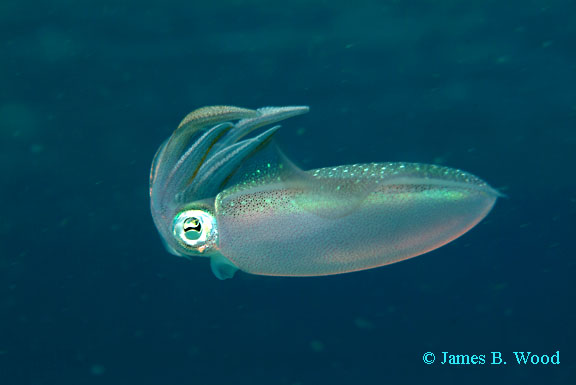Caribbean
Reef
Squid (Sepioteuthis sepioidea)
By Kelly M. McKay
Dr. James B. Wood - Editor
Dr. James B. Wood - Editor
|
Caribbean
Reef
Squid (Sepioteuthis sepioidea)
By Kelly M. McKay
Dr. James B. Wood - Editor |

|
Carribean Reef
Squid (Sepioteuthis sepioidea)
By Justin
Anderson
|
